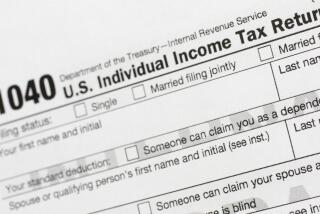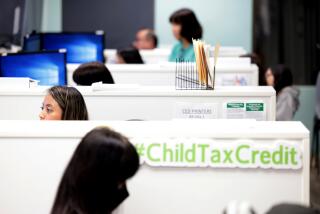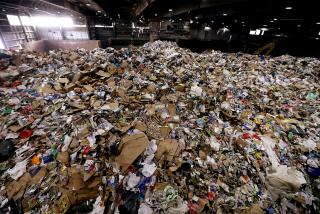New Tax Law : Donations Flood Thrift Shops in Year-End Crush
The small front room of the Haven Hills Thrift Shop in Canoga Park was bustling, with 10 customers pawing their way through racks and stacks of used clothing.
“Wait till you see the back room,” said manager Joyce Okos. She had to close that room to customers because the purses, clothes, books and old furniture are piled almost to the ceiling.
Donations increase at the end of every year, out of holiday generosity and concern for making deductible contributions before the end of the tax year, San Fernando Valley thrift store operators say. But this year, on the eve of a change in federal tax laws, some charities report a greater increase than usual.
“Everybody wants to get in under the current year . . . because of the uncertainty of the tax situation,” said Zel Conn, coordinator of thrift shops for City of Hope.
New Law Requires Itemization
The new law will require those claiming deductions for non-cash charitable donations to itemize them, said a spokeswoman for the Internal Revenue Service. Under current law, taxpayers must itemize such deductions only if they claim more than $500 worth, she said.
“I did not want to go to the bother of itemizing everything including my underwear,” said Ray Scruggs, 41, of Canoga Park as he tried to donate several worn jackets to a Goodwill thrift store. The store, however, had run out of storage space. Scruggs and several other would-be donors were asked to return the next morning.
Donations to Goodwill’s 22 stores in 1986 are estimated at 26% more than 1985, said Goodwill Vice President Dan Mulcahy, but he could not say with certainty that this year’s December rush tops those of past years.
Charities welcome the increase, but operators said it has brought some headaches.
At the Salvation Army’s distribution center in Van Nuys, Maj. Richard Smith said the intake this December has been about 10% more than the rest of the year, contrasted with a 5% increase in past Decembers.
But much of the increase, Smith said, consists of “unusable merchandise,” a term he prefers to “junk.”
“The greatest increase is coming in unusable, unupholstered furniture,” he said. The Salvation Army turns such items down, but many people leave them at collection centers anyway, he said.
Lois Jackson, a bookkeeper for the Burbank store operated by the United Cerebral Palsy-Spastic Children’s Foundation, said her group has the same problem.
“One lady called and wanted us to pick up a microwave,” Jackson said. “I said, ‘Does it work?’ She said, ‘Well, you have to bang it on the side,’ and we said ‘no.’
“I really give them the third degree, and sometimes they lie to me.”
Jackson said her pickup-truck drivers have begun plugging in television sets to make sure that they work before accepting them.
But the stream of usable items remains steady. Eileen Motzkin, a 29-year-old Van Nuys schoolteacher, unloaded 12 boxes of old clothes Tuesday at the Salvation Army in Van Nuys.
Motzkin said she did so because she wanted the tax deduction but also because the Salvation Army is a favorite charity and “there are always things we need to get rid of.”
More to Read
Inside the business of entertainment
The Wide Shot brings you news, analysis and insights on everything from streaming wars to production — and what it all means for the future.
You may occasionally receive promotional content from the Los Angeles Times.










